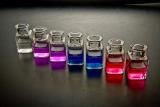Alternate Test Procedures: Questions and Answers
- How do I write a method in EPA format?
- How do I ask EPA to review my method under the CWA ATP Program?
- Is a method that is reviewed under the CWA ATP program an approved method?
- Are there any exceptions to rulemaking before use of an alternate test procedure?
- Why does EPA have two validation protocols for chemical methods?
- What is "136.6" method flexibility?
- Does 136.6 flexibility to modify methods only apply to CWA chemical methods?
- Where can I find the "Guide to Method Flexibility" document?
- How does EPA determine the equivalency of an ATP for a method defined parameter with a different determinative step than the EPA approved method?
- Additional information
No, first the method must be reviewed and found to be complete and supported by the documentation, then the method must be approved through rulemaking before the method may be added to 40 CFR Part 136 as an approved CWA method.
Yes, but only for wastewater methods. Approval for nationwide use requires a rulemaking process. In the interim, a facility may apply to an EPA Region for a limited-use ATP approval letter, i.e. for use at that facility. Generally it is not necessary for the limited-use ATP applicant to submit data, or do a side-by-side comparison, if the method has already been reviewed for nationwide use under the CWA ATP program which requires multi-lab and comparability data and the review has resulted in a recommendation for inclusion in Part 136.
New methods and ATP methods (i.e., a modification to an approved method) must be approved through rulemaking before nationwide use.
• See also Flexibility to Modify CWA Methods memo (November 2007)
Yes. This flexibility does not apply to drinking water methods, or to CWA microbiological or biological methods.
• Guide to Method Flexibility (1996)
- How does EPA determine the equivalency of an ATP for a method defined parameter with a different determinative step than the EPA approved method?
EPA is revising the chemical ATP and New Method protocols to include guidance for evaluating the comparability of test procedures for use under the Clean Water Act program that measures method defined parameters regulated at 40 CFR Part 136. The revised protocols will especially focus on the amount and type of data (including QC) that will be needed to establish comparability of the ATP or new method to the approved Part 136 method(s) and the statistical procedures that will be used to evaluate comparability. EPA anticipates these revised protocols will be ready for publication in 2015.
EPA also encourages voluntary consensus standard bodies![]() voluntary consensus standard bodiesDomestic or international organizations that plan, develop, establish, or coordinate voluntary consensus standards using agreed-upon procedures. These bodies are defined by openness, balance of interest, due process, the existence of an appeals process, and a consensus process. (VCSBs) to consider this guidance when submitting methods to be considered for approval at Part 136. EPA considers methods from VCSB’s and other federal agencies under the National Technology Transfer and Advancement Act (NTTAA) for inclusion in Part 136. Once the protocol is established, EPA will use it to evaluate equivalency of all ATPs and new methods for measurement of method defined parameters to be considered for approval at Part 136.
voluntary consensus standard bodiesDomestic or international organizations that plan, develop, establish, or coordinate voluntary consensus standards using agreed-upon procedures. These bodies are defined by openness, balance of interest, due process, the existence of an appeals process, and a consensus process. (VCSBs) to consider this guidance when submitting methods to be considered for approval at Part 136. EPA considers methods from VCSB’s and other federal agencies under the National Technology Transfer and Advancement Act (NTTAA) for inclusion in Part 136. Once the protocol is established, EPA will use it to evaluate equivalency of all ATPs and new methods for measurement of method defined parameters to be considered for approval at Part 136.
EPA will continue to accept requests to evaluate new ATP applications for method defined parameters including those with a different determinative step than the existing methods in Part 136 in the interim while the protocols are being completed. However, parties should be aware that EPA may delay its final determinations on such new requests and may request additional data as the revised protocols are developed and the data requirements are clarified.
Additional Information
For additional information, please email Lemuel Walker (walker.lemuel@epa.gov) or call 202-566-1077.

